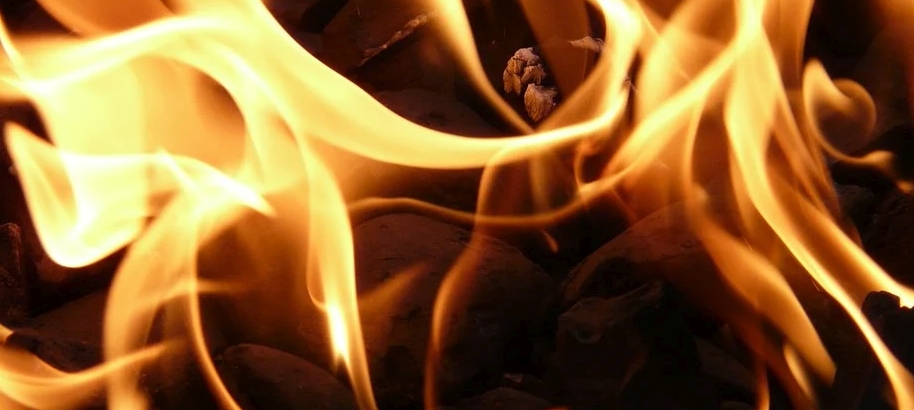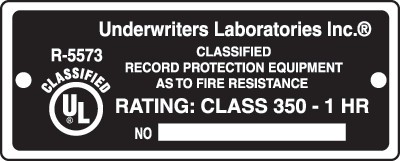
FREE SHIPPING
*On Orders Over $250We Call Within 48 Business Hours to Confirm Order
FREE SHIPPING
*On Orders Over $250We Call Within 48 Business Hours to Confirm Order

UL? KIS? JIS? 30 minute? 1hr? 2hr? Class A? Class B? Class C? Drop test?
What do all of these safe fire rating classes mean?
A safe's fire rating indicates how long the internal temperature of the safe will remain below the specified temperature. Factors affecting fire ratings include the certifying agency, external test temperature, duration below the specified internal temperature, and the safe's ability to survive a fall.
The Underwriters Laboratories (UL) is the global agency that offers standardized testing for companies who want to substantiate product claims. They are the Gold Standard of rating systems, recognized and utilized worldwide in product manufacturing.
There is one UL fire rating for safes - the UL 72 Standards for Tests for Fire Resistance of Record Protection Equipment. The UL 72 safe fire rating test results in a safe receiving a fire class rating of a temperature and a length of time. "Class 150 - 2 HR," for example, is a UL rated fire safe that keeps the content of the safe less than 150°F for 2 hours at a specified external temperature.

Most safe fire ratings will be rated as "UL Class 350°F." The 350 rating means that the internal temperature of the safe will stay below 350° F. A second value, - X Hr, is then added to specify the length of time for which the safe's internal temperature stays below 350° F. So the entire fire rating will look something like this UL Class 350 - 1 Hr (for a 1-hour fire rated safe.)
The 350 rating is specifically designed to protect paper documents which will compost at slightly higher temperatures.
Other fire ratings include:
When you see these UL Fire Ratings applied, you can be assured that your safe has met the strongest standards of testing.
Safe fire rating use to be recored as Class A, Class B, Class C and Class E, but this are outdated terminology because it did not, at a glance, provide any useful information. The Class terminology has been replaced with the temperature - time class rating system, as in the table below.
| Fire Class Ratings: Time and Temperature | ||||
| UL Class | Internal Temperature | Fire Rated Time | External Temperature Up To | |
| Class 350 - 4 hr Formerly Class A |
< 350°F | 4 Hours | 2000°F | |
| Class 350 - 2 hr Formerly Class B |
< 350°F | 2 Hours | 1850°F | |
| Class 350 - 1 hr Formerly Class C |
< 350°F | 1 Hours | 1700°F | |
| Class 350 - 1/2 hr Formerly Class E |
< 350°F | 30 Minute | 1550°F | |
UL Fire Ratings for Safes are the gold standard, check out our article on this safe caught in a California fire and see How Important Are UL Fire Ratings?
So what are these tests? How are they conducted?
For the fire endurance test, heat sensors and paper are distributed evenly in the safe. The safe is exposed to a uniformly distributed fire that quickly rises to a given temperature based on the desired rating, and the safe must maintain an internal temperature at or below the desired temperature for the amount of time required for the rating.
Longer fire ratings also require higher the external temperatures. So higher fire ratings are more difficult to achieve than just reaching an increased set temperature exposure time.
Once cooled, the safe is opened and examined for usability, heat damage, locking mechanism function, etc.

The safe is locked in a preheated furnace set to 2000°F. This temp is maintained a specific length of time (30 minutes for a 1-hr fire rating is an example)
If it doesn't explode, the safe then cools inside the closed furnace. Once cooled (this can take days), it's opened and examined for usability, as above.
Safe’s Fire Impact Test (Manufacturer's Option)
For the safe's impact test, the safe is placed in a furnace, following the same time and temperatures used in the Fire Endurance Test.
At the end of the required time in the furnace, the oven is turned off, and within 2 minutes from the fire being turned off, the safe is dropped 30 feet onto a pile of loose bricks over concrete.
It's brutal. But if your safe was on the third story, and the floor burnt through, you'd want to know if you have any protection. But wait … there's more ...

When the safe has cooled sufficiently to handle, it's then turned upside down, and again goes through the testing procedure. Then it's allowed to cool, inside the closed furnace. Then it's inspected for usability. Again.
Many of the fire safes from one of our favorite manufacturer, Hollon, (see Are Hollon Safes Good Safes) have survived this test.
In the UL safe fire rating system, the safes must be tested again after one year of manufacturing to maintain their rating, and the rating is good for comparably built safes down to 50% volume smaller or up to 50% volume larger.

Testing to achieve a Safe's UL fire rating is no small affair, and it can cost more than $60,000 (plus the costs of the safes scarified to the testing ovens). In many cases safe manufacturers just can't pony up that kind of money for each safe they have to test, especially for new manufacturers with limited funding.
Because of this, safe manufacturers may hire an independent company other than UL to perform their safe fire ratings. The three most common alternative fire certification agencies are the KIS, JIS and ETL certifications.

The KIS fire rating is the Korea Industrial Standards rating defined by fire test
KSG-4500. The KIS KSG-4500 is a slightly different standards that tests safes at external temperatures of 1700° F to 1850° F while maintaining an interior temperature below 350° F.
The JIS Safe Fire Rating is a safe fire certification out of Japan under specification S 1037-12. The S 1037-12 test uses external temperatures from 1700° F to 1850° F . This fire rating also typically includes a drop test.

The ETL-Intertek laboratories is a safe fire rating facility that is being used frequently in the US. They do all of their fire rating tests at 1200 degrees. They've been in business for over 100 years. Safe companies, such as American Security Safes, use this fire test certification.
Whether it’s UL fire rating, KIS Fire Rating, ETL or the JIS fire rating, standardized testing is the best way to ensure the safe will succeed in its fire rating.
Many manufacturers will do their own testing and give their own rating. Be wary of these!
This is an internal company test with no oversight, and may in fact only be a guess or they conduct the test under the most favorable conditions (like slowly over 40 minutes, which doesn't really give you an accurate assessment). They may also reduce the external temperature to as low as 1200°F.
Check out our article on Getting the Best Fire Rated Safe – many safes that have had their own testing, don’t achieve even close to the time they are “fire rated” for.
While an internal fire rated safe may be perfectly capable, do your research and try to determine how the fire rated tests were performed.